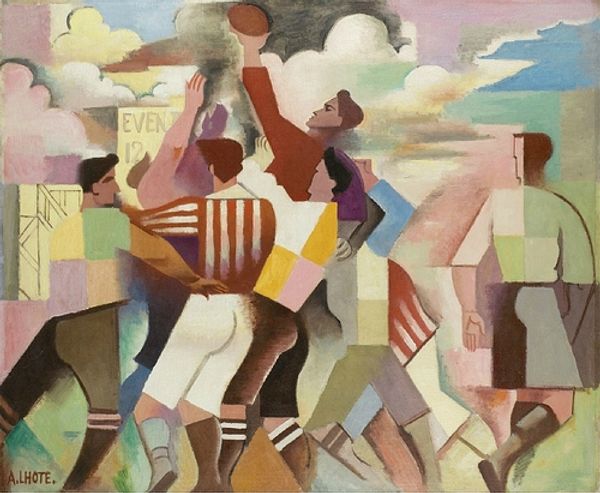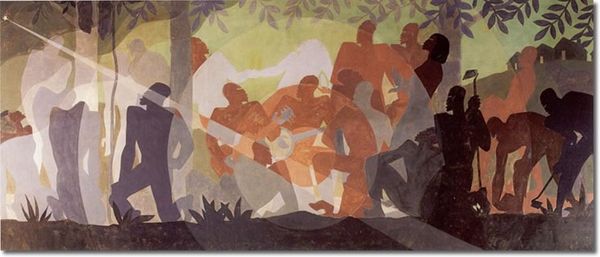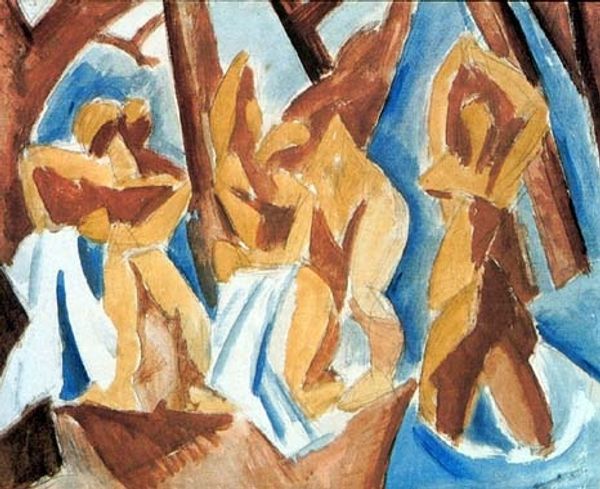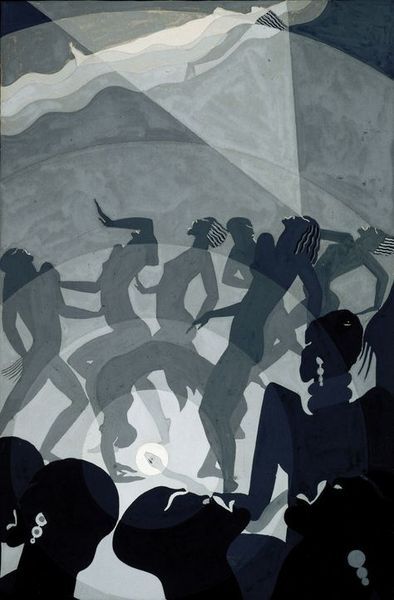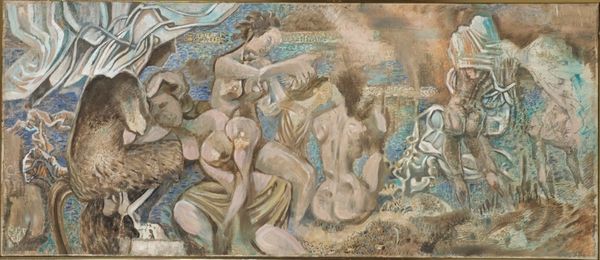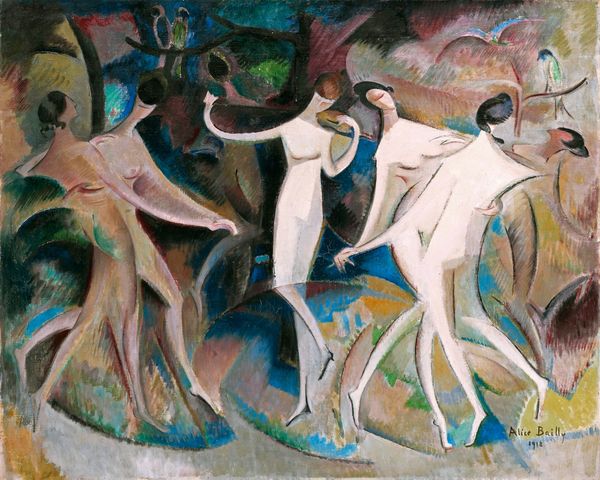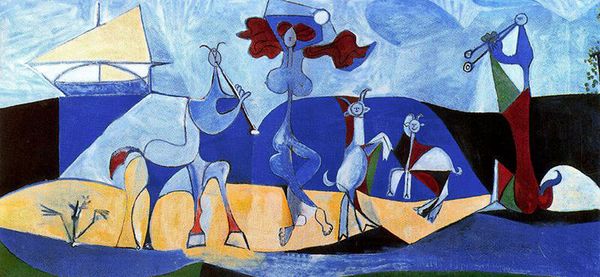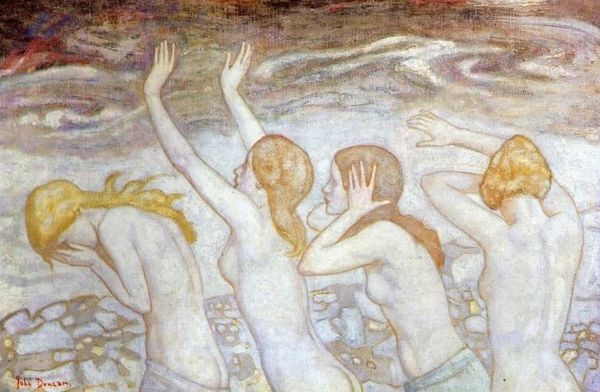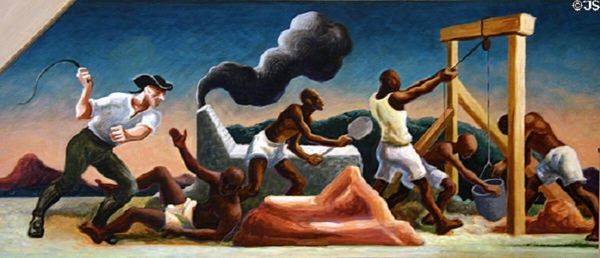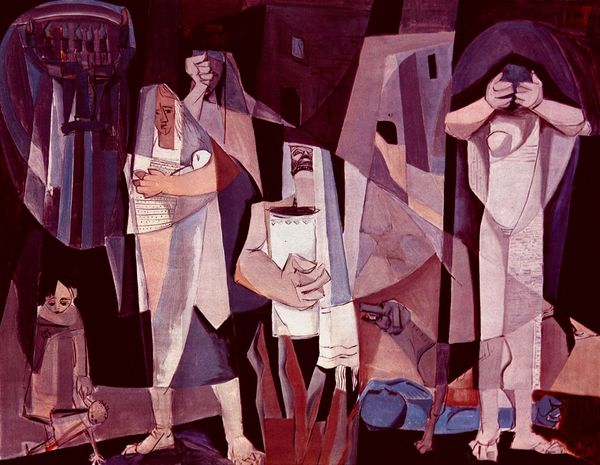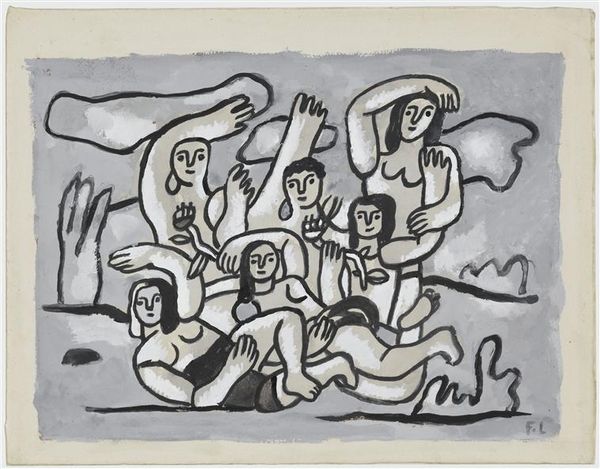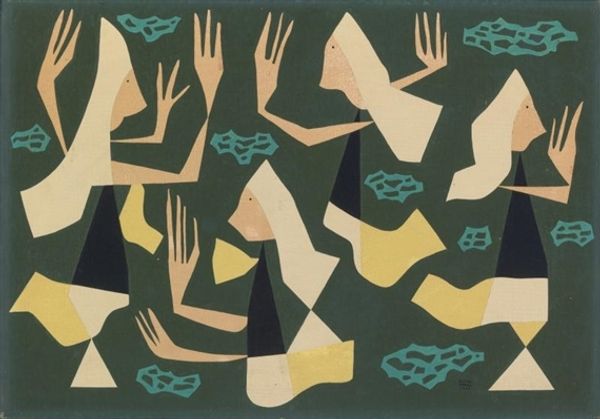
painting, oil-paint
#
cubism
#
painting
#
oil-paint
#
figuration
#
oil painting
#
roman-mythology
#
geometric
#
mythology
#
symbolism
#
history-painting
Copyright: Public domain
Editor: So, this is Aleksandra Ekster's "Seven Against Thebes," an oil painting that looks like it might be Cubist. The figures feel… spectral, caught between action and grief, perhaps? How do you interpret this work, especially considering its title referencing Greek mythology? Curator: I see this as Ekster using a classical narrative to explore contemporary anxieties. Consider the historical context: early 20th century, pre-revolutionary Russia. The myth of Thebes, with its themes of fratricide, civil war, and divine curse, becomes a lens through which to examine the impending social upheaval and violence of her time. Editor: That’s interesting. So the stylized, almost fragmented, figures… Curator: Exactly. The Cubist fragmentation can be understood not just as an aesthetic choice, but as a visual representation of societal fracturing, the breaking down of old orders. Also, the figures, gendered and de-gendered simultaneously, with their ambiguous social cues suggest this could speak to modern anxieties of gender performance, of challenging gender binaries that became prominent after the suffragette movements. Editor: I didn’t think about gender implications within it. It's making me see new dimensions in this artwork that challenge the history around civil unrest and gender expectations. How the colours seem to bleed across each figure. I can't help but feel as though all those concepts are in active war, too. Curator: Exactly. And I’d encourage you to explore the symbolist elements she incorporates too. Myth offered a potent language for veiled critique. It allowed artists like Ekster to engage with sensitive political issues indirectly. How do you think that affects the work, or your perception of it? Editor: It adds layers of meaning and makes it feel less distant; I can feel the artist trying to warn me about conflict that may exist still, and that affects me even now. Thanks for showing that different context can make artwork more real and personal, not more distant.
Comments
No comments
Be the first to comment and join the conversation on the ultimate creative platform.
